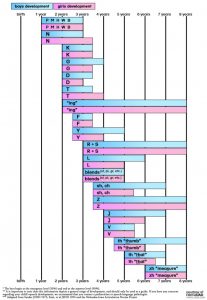A child’s third birthday can be a mixed bag. He is starting to demonstrate more of an individual personality. She may be entering the world of tantrums. He is getting into EVERYTHING thanks to growing confidence. But a child’s third birthday also can hold some anxiety for those families whose children receive state-funded early intervention services.
In the state of Indiana (and many other states), early intervention services are provided for free or very low cost for children who qualify; however, services END the day before the child’s third birthday. This can be a scary time for parents. Often you have gotten to know your child’s therapists well…they come to your home for an hour each week, they have experienced successes and regressions with you, they may have walked with you as you received a hard diagnosis, they have been involving any other children in your home…the bond is strong! When children turn three, parents often wonder, “What next??”
Across the country, the public schools are responsible for taking over therapy services once a child hits three, no matter the time of school year. If a child continues to qualify for therapy services then the local preschool (or developmental preschool) for the area school district provides those services. Often they will also provide transportation if the child stays for preschool and not just therapy time. They will usually offer two options (both of which are free):
- Preschool with services: Your child will be enrolled in preschool and will receive services while in the school (either pull out or in the classroom, in a group vs. one on one, etc.). The details will be worked out during your initial IEP meeting that will occur shortly before your child’s third birthday as they age out of EI.
- Outclient therapy: Many districts will give you the option to bring your child in JUST for therapy services and take them home. In this case you will be responsible for transportation. Again, the details like frequency will be ironed out during the IEP meeting.
If parents do not want to utilize these services (or if the child does not qualify using the academic model which has different standards than the medical and family models) then private therapy may be a great option. Private therapy is often one on one, intensive therapy that is tailored towards what your family needs, even if it is not just academics related. Depending on the therapist, some clinicians have offices and some go into homes. An evaluation should be set up before your child turns three to make the transition smooth and quick.
I hope this helps ease some of the stress that comes with the aging out process. If you have any questions about private therapy, school therapy (I’ve done both!), or anything else please contact me!

